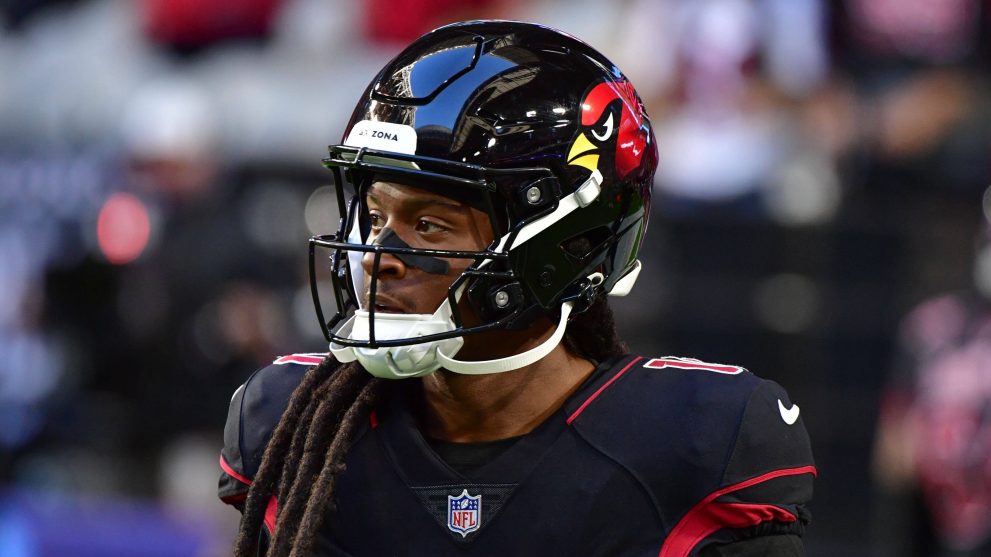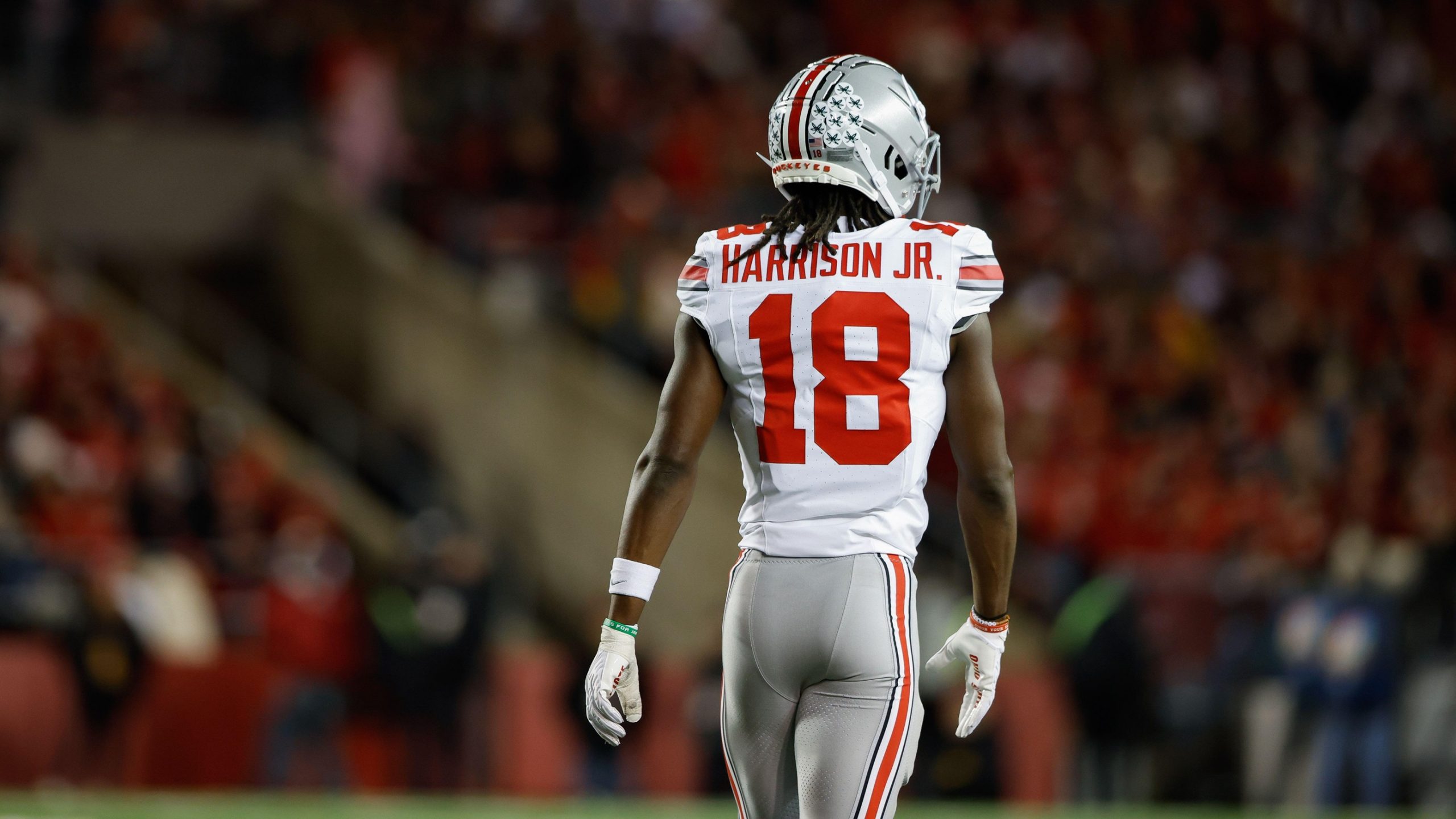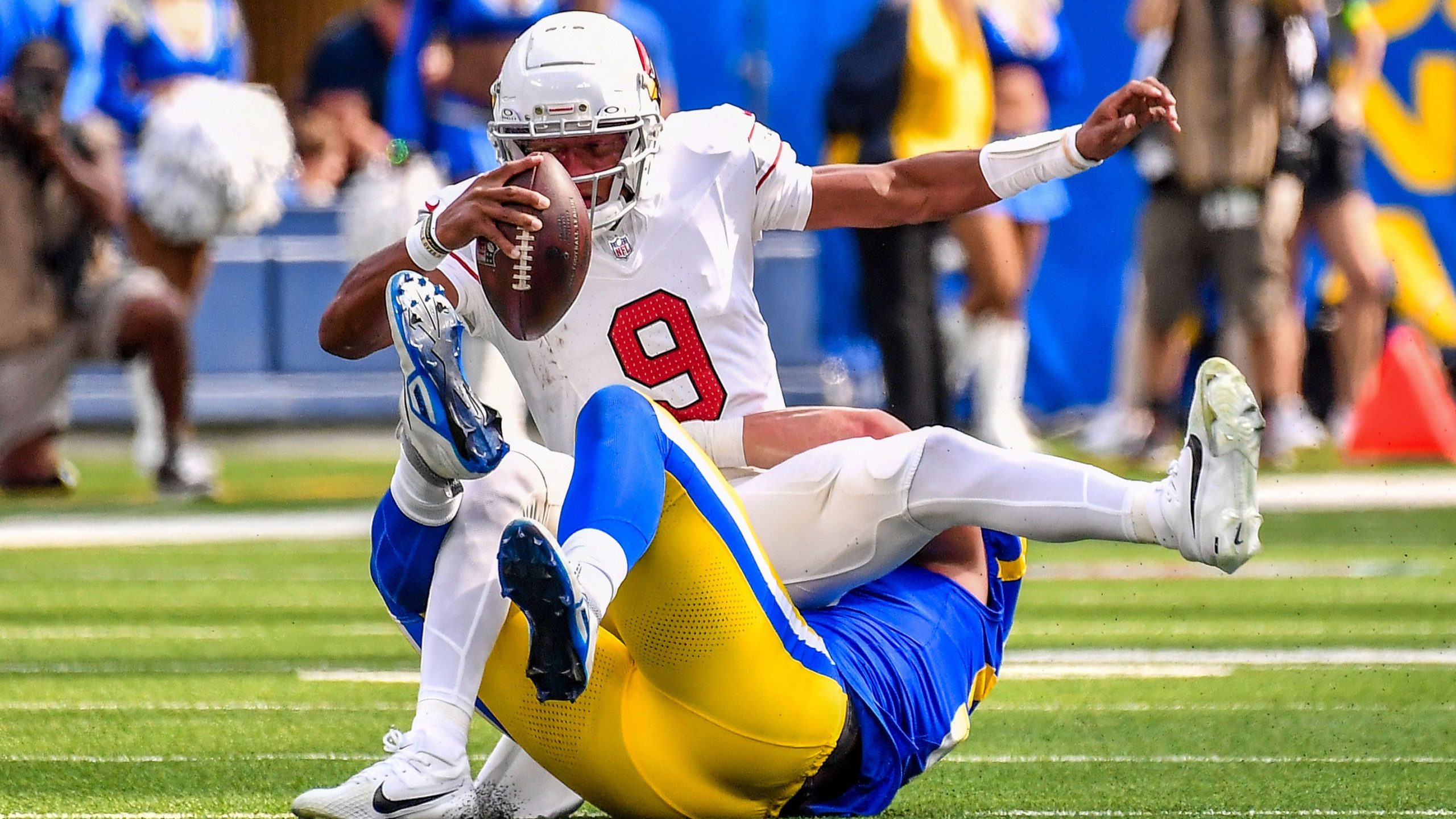Fanbases get extremely hyped after the three-day NFL draft, but in reality, it does little to move projected win totals for the upcoming season.
The Houston Texans, for example, drafted quarterback C.J. Stroud with the No. 2 overall pick and then traded up to 3 so they could grab edge-rusher Will Anderson. If any team was due to see marked odds movement, it would have been the Texans.
So let’s take a look, via DraftKings:
- Houston’s projected win total before the draft: 5.5.
- Houston’s projected win total after the draft: 5.5.
The Texans and the Arizona Cardinals are projected to finish with the fewest wins in the NFL in 2023, making them the early front-runners to land the No. 1 overall pick in a quarterback-rich 2024 draft.
And not only does Arizona hold its own pick, it now has Houston’s because it was on the other end of the Anderson deal. First-time GM Monti Ossenfort nabbed it when Houston moved up from 12 to 3, and that trade was very likely the single best move of the draft.
It’s been a recurring theme for Ossenfort in his four months with the Cardinals. He took over a roster that was among the worst in the league, with cap space that was not nearly in the same ballpark as other rebuilding teams, but has done well in three different phases of his first offseason.
The Draft
It’s hard to know which teams hit on the draft in the moment, because ‘steals’ sometimes don’t work out and ‘reaches’ will sometimes become key cogs.
But there is no denying that Ossenfort’s trade-back strategy was a boon for the Cardinals. According to Pro Football Focus, the extra draft capital Arizona accrued was the most in the league, surpassing even the Bears.
Additionally, Ossenfort repeatedly targeted premium positions with his early-round picks: left tackle Paris Johnson in the first, edge rusher B.J. Ojulari in the second, cornerback Garrett Williams and wide receiver Michael Wilson in the third.
While it will be a couple years until we know if they pan out, the process was so much more sound than Steve Keim’s strategy of repeatedly spending first-round capital on off-ball linebackers.
Free Agency
The Cardinals basically did nothing in free agency, and that was the correct move. There was no upside to spending big on veterans who might help bring a win or two but would not actually get Arizona into the playoffs.
With quarterback Kyler Murray recovering from a torn ACL, wide receiver DeAndre Hopkins wanting out and myriad holes across the board, this was not a one-year fix.
So Ossenfort let defensive tackle Zach Allen and cornerback Byron Murphy leave, and should get at least one compensatory pick in next year’s draft.
He saved cap space on those non-moves, which can be rolled over to the 2024 season. The Cardinals absolutely should have been aggressive in the 2022 offseason, coming off an 11-win campaign and with Murray still dirt cheap.
They were gob-smackingly quiet that year, but the same philosophy was the right one this offseason.
The Non-Trades of Budda Baker and DeAndre Hopkins
If the asking price was met, I have little doubt both Hopkins and star safety Budda Baker could have been sent packing during the draft.
Ossenfort clearly understands value, and getting a premium pick back while saving cap space would have helped the organization long-term.
But there is also soundness in his decision-making to keep both through the draft. Obviously the interest wasn’t high enough, and with both under contract for two more seasons, the Cardinals don’t need to jettison either player for pennies on the dollar.
If a star wideout is lost for the season in training camp, Hopkins’ value could increase. If he sticks with the Cardinals for the early portion of the season and plays well, there could be several teams interested at the trade deadline.
Arizona is due to pay Hopkins more than $1 million per week during the season because his base salary is nearly $20 million, so getting off that could be the move before Week 1 arrives.
But Ossenfort could also choose to slow-play it in order to get a better draft pick, which would bring savings though a rookie scale contract for the next four seasons.
Whichever route he chooses, it was smart not to kowtow to the demands of Hopkins or Baker. Both have big base salaries in 2023 that they don’t want to forfeit, so there will be no teeth behind any potential holdout talk.
Ossenfort has the leverage here and if he can eventually get premium draft capital for one or both of them, it will be even more ammo for the Cardinals in the 2024 draft.
Conclusion
The Cardinals have a coherent plan and Ossenfort has stuck with it throughout the offseason. It’s a breath of fresh air after recent seasons in which it felt like the strategy would ebb and flow from one year to the next.
Arizona is building through the draft and putting serious focus on premium positions. Obviously, the picks need to work out in order for this rebuild to gain some traction, and the loss of draft capital due to tampering was a sloppy misstep.
But it’s clear the Cardinals are in good hands. The 2023 season is still expected to be a rough one, but after a tumultuous year-and-a-half, there is finally a flicker of brightness on the horizon.






